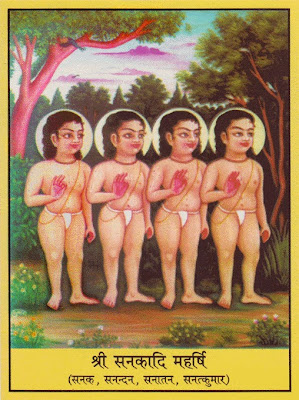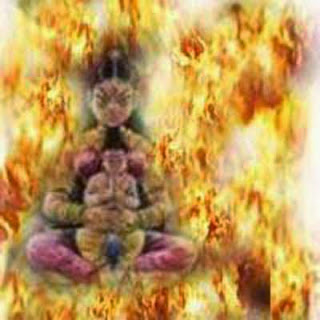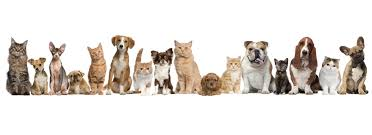Interesting Mythological Story about Holi
Mythological Story behind Holi Festival
Compiled
by: Vijay Sardana
Happy Holi to all of you.
On the occasion of Holi festival, this is an attempt to understand the characters behind the Holi festival and what was the reason behind the role played by various characters in Hindu mythology behind the Holi.
According to a story from Bhagavata Purana, Hiranyakashipu and Hiranyaksha are Vishnu's gatekeepers Jaya and Vijaya, born on earth as the result of a curse from the Four Kumara.
According to Sources the birth place of Hiranyakashipu is Moolsthan (Present Day Multan in Pakistan).
Who were Four Kumaras?
It is important to know
their role in Hindu mythology that is why I am giving in detail.
The Kumaras are four sages (rishis) who roam the universe as children from the Puranic texts of Hinduism, generally named Sanaka, Sanatana, Sanandana and Sanat kumara. They are described as the first mind-born creations and sons of the creator-god Brahma. Brahma, who had received the knowledge of the Puranas from the Universal Being (god Himself) Narayana, imbibed this to his Four Kumaras (Sanat Kumaras).
SanatKumaras then taught the
Puranas to Narada. Narada transmitted
it to Krishna Dwaipayana who in turn scripted them in monumental epic documents
of 18 Puranas.
The Vishnu Purana is recorded in two parts, the Vishnu Purana and Naradiya Purana. The teachings of Sankaka of the Kumara brothers are contained in the Naradiya Purana which is also divided in two parts, the first part containing the teachings of Sanaka and others.
Born from Brahma's mind, the
four Kumaras undertook lifelong vows of celibacy (brahmacharya) against the wishes of their
father. They are said to wander throughout the materialistic and spiritualistic
universe without any desire but with purpose to teach. All four brothers are
studied Vedas from their childhood, and always travelled together.
The Bhagavata Purana lists the Kumaras
among the twelve Mahajanas (great
devotees or bhaktas) who although being eternally liberated
souls
from birth, still became attracted to the devotional service of Vishnu from
their already enlightened state. It also mentions them as being an avatar of
Vishnu. They play a significant role in a number of Hindu spiritual traditions;
especially those associated with the worship of Vishnu and his avatar Krishna, sometimes even
in traditions related to the god Shiva.
Birth and mission of Kumaras
The four Kumaras are the
eldest sons of the creator-god Brahma. When Brahma undertook the task of creation of
the universe, he first created some beings from different parts of his body to
aid him. The Kumaras was the first such beings. They were created from his mind
and appeared as infants. Brahma orders to aid creation. Manifestations of Sattva (purity) and uninterested in worldly life, they
refused and instead devote themselves to God and celibacy, against the wishes
of their father. The Bhagavata Purana
narrates further that their refusal made Brahma angry and his wrath
manifested into the god Rudra, an aspect of
Shiva.
As per a variant, Brahma
practised austerities (tapas) and pleased
the god Vishnu, so he appeared in the form of the
four infant Kumaras as Brahma's sons. Some texts like the Devi Bhagavata
Purana and the Bhavishya Purana narrates the four Kumaras appeared even
before the Brahma of the present age. (In a cycle of time, some texts say that
a Brahma dies and is reborn.)
The four Kumaras learnt the Vedas at the age of four or five.
They thus became great jnanis
(learned beings), yogis and Siddhas
(the perfect enlightened ones). The Kumaras remained in form of children due to
their spiritual virtues. The age of the sages varies in various sacred texts.
While five is the most popular, they are also mentioned as being fifteen or
sixteen year old youths. They practised the vow of renunciation (Sannyasa) and celibacy (brahmacharya) and remained naked. They
wander together throughout the materialistic and spiritualistic universe
without any desire but with purpose to teach. They are sometimes included in
the list of Siddhars (Tamil
equivalent for Siddha).
The four Kumaras are said to
reside in Jana Loka or Janar
loka (loka or world of the intellectuals in the
present parlance) or in Vishnu's abode Vaikuntha. They constantly recite the
mantra Hari sharanam (Vishnu – "God the Redeemer our
Refuge") or sing Vishnu's praises. These hymns and glories of Vishnu serve
as their only food. Another son of Brahma, the sage Narada, who is described as their disciple, extolls
their virtues in the Padma Purana.
Narada says though they appear as five-year old children, they are the great
ancestors of the world.
Discourses
The discourses of the four
Kumaras are found in the Hindu epic Mahabharata as well as the Bhagavata
Purana.
The four Kumaras roamed
around at their free will with their cosmic powers all over the universe.
During one of their sojourns, they arrived at
Vaikuntha, the abode of Vishnu. The city,
with the residence of Vishnu located at the center of seven circular walls, is
considered as a place of bliss and purity. It has seven gates of entry. The
four Kumaras passed through the first six gates without any hindrance. The
seventh gate was guarded by Jaya and Vijaya, the two dvarapalas (door-guards) of Vishnu's palace, who
looked like Vishnu with his blue skin and four arms adorned with huge garlands
and mace.
The angry guardians stopped
the four Kumaras and laughed at them since they looked like children and were
also naked, and did not permit them to enter through the seventh gate. The four
Kumaras were perplexed by the behavior of the gatekeepers as they had not faced
such a situation and ridicule anywhere else. They expected Jaya and Vijaya to
be like their master Vishnu, who has all beings in his abdomen and who dwells
in all beings as the soul and thus does not differentiate among beings. Angry
with the behaviour of the gatekeepers, the Kumaras cursed them to be born on
earth, thrice three villains with characteristics of "lust, anger and
greed". The gatekeepers accept the curse and bow to the Kumaras and beg
for their forgiveness. They request the Kumaras that they should be devoid of 'moha'
(“infatuation”) lest they forget their Lord, Vishnu.
Vishnu who learnt of the
incident, appeared before the Kumaras in all his glory with his routine. The
four Kumaras, who were on their first visit to Vaikuntha, took in by the sight
and the glittering divine figure of Vishnu. With deep devotion, they appealed
to him to accept them as his devotees and allow them to offer worship at his feet
for all time to come and let his feet be their final emancipation. Vishnu
complied with their request and also assured Jaya and Vijaya that they will
born as demons on earth but will be released from all births (killed) by an avatar of Vishnu (which was later appeared
as Narshimha).
The
two guards were dismissed by the lord to go and suffer the curse of the Kumaras
on earth and then only return to his abode, after the end of the curse. The two
banished guards were then born on earth, at an inauspicious hour, to the sage Kashyapa and his wife Diti as asuras who were
named Hiranyakashipu and Hiranyaksha.
Who
was Diti (mother of Harinyakashipu)?
In Hinduism,
Diti (Sanskrit: दिति) is
an earth goddess and mother of the Maruts with Rudra.
She is also the mother of the Daityas with
the sage Kashyapa. She wanted to have a son who
would be more powerful than Indra (who had killed her previous children) and
so she practiced magic and kept herself pregnant for one year.
Indra used a thunderbolt to splinter the fetus into many pieces, the Maruts.
Diti is the daughter of
Daksha-Prajapati one of the grandfather's of creation, a son of Brahma, the god
of ritual skill and a king. Her mother was Veerni. She is one of the sixty
daughters of Daksha. She is one of the thirteen wives of Kashyapa, another
prajapati and a great sage. She is also Aditi's sister.
Birth of Diti's children
including Harinakashipu:
Seeing Aditi's cowives being
blessed with children; Diti too was eager to have a son. So, she had asked
Kashyapa for company. Though Kashyapa had acceded to her request, He had asked
her to wait for an hour as it was then the time when Shiva and
his retinue of ghosts and spirits moved about; which was considered
inauspicious and unsuited. However; Diti; shaken by the passion of love and
lust, couldn't wait and she seized kashyapa by his garments, which was a sign
of immodesty. Since Diti's mind was impure; tainted by lust, she would give
birth to two unworthy sons who would violate all the ethics (Dharma) and follow
the path of Adharma. When Diti felt sorry, Kashyapa
consoled her by saying that they would be slain by Lord Vishnu himself and thus
be blessed by the Lord's contact in the end. Also; one of her four grandsons by
her first son, would be a great devotee of Vishnu and also the noblest man (He
is Prahlada).
In this way, Jaya and Vijaya
were born on this earth to Diti as Hiranyakashipu and Hiranyaksha. In Section 67, Adi Parava of Mahabharata, it is stated that king Shishupala, the powerful ruler of Chedis, was also an incarnation of
Hiranyakasipu, the son of Diti.
She has many demon sons and
daughters. Her two most famous sons were the rebirths of Vishnu's gatekeepers
Jaya and Vijaya who failed to keep their dharma. They were Hiranyaksha who was
slain by Vishnu's varaha avatara and Hiranyakashipu who was slain by Vishnu's
man-lion, narasimha avatara.
She also had a daughter
named Holika who was killed by her own powers. Diti is usually
mean and cruel to Kashyapa and Aditi. She is always obsessed with trying to
raise the power of demons to its peak. She also hates Aditi's sons who are the
gods.
Penance
After his brother
Hiranyaksha's death at the hands of the Varaha avatar
of Vishnu, Hiranyakashipu, started to abhor Vishnu. To which end he decides to
attempt to kill Vishnu by gaining mystical powers, which he believes Brahma, the chief among the devas will award to him if he undergoes many
years of great austerity and penance
just as Brahma has awarded to other Rakshasas. This initially seems to work as
planned with Brahma becoming pleased by Hiranyakashipu's austerities. Brahma
thus appears before Hiranyakashipu and offers him a boon of his choice. Upon
Hiranyakashipu's asking for immortality however, Brahma refuses. Hiranyakashipu
then requests the following:
“O my lord, O best of the
givers of benediction, if you will kindly grant me the benediction I desire,
please let me not meet death from any of the living entities created by you.
Grant me that I not die within any residence or outside any residence, during
the daytime or at night, nor on the ground or in the sky. Grant me that my
death not be brought by any being other than those created by you, nor by any
weapon, nor by any human being or animal. Grant me that I not meet death from
any entity, living or nonliving. Grant me, further, that I not be killed by any
demigod or demon or by any great snake from the lower planets. Since no one can
kill you in the battlefield, you have no competitor. Therefore, grant me the
benediction that I too may have no rival. Give me sole lordship over all the
living entities and presiding deities, and give me all the glories obtained by
that position. Furthermore, give me all the mystic powers attained by long
austerities and the practice of yoga, for these cannot be lost at any time.”
Birth of Prahalad:
Whilst Hiranyakashipu had
been performing the penance to be granted this boon, his home had been attacked
by Indra and the other devas, seizing the
opportunity in his absence. At this point the divine sage, Narada intervened
in order to protect Hiranyakashipu's wife, Kayadhu, who he describes as 'sinless'.
Following this event Narada takes Kayadhu into his care and while under the
guidance of Narada, her unborn child (Hiranyakashipu's son) Prahlada, became affected by the
transcendental instructions of the sage even at such a young stage of
development. Thus, Prahlada when later growing as a child began to show
symptoms of this earlier training by Narada, gradually becoming recognised as a
devoted follower of Vishnu, much to his father's disappointment.
The Legend of Prahalad and
Holika
After the boon and
blessings of Brahma, Hiranyakashyap considered himself ruler of the Universe,
and higher than all the gods.This is the main Holi
legend. Holika was a female demon, and the sister of Hiranyakashyap, the demon
king. Prahalad was the king's son.
His father hated him because Prahalad was a faithful devotee of the god Vishnu.
One day the king asked him “Who is the greatest, God or I?"
"God is," said the
son, "you are only a king."
The king was furious and
decided to murder his son.
But the king's attempts at
murder didn't work too well. Prahalad survived being thrown over a cliff, being
trampled by elephants, bitten by snakes, and attacked by soldiers.
So the king asked his
sister, Holika, to kill the boy.
Holika seized Prahalad and
sat in the middle of a fire with the boy on her lap.
Holika had been given a
magic power by the gods that made her immune to fire, so she thought this was a
pretty good plan, and Prahalad would burn to death while she remained cool.
But it's never wise to take
gods' gifts for granted! Because Holika was using her gift to do something
evil, her power vanished and she was burned to ashes. Prahalad stayed true to
his God, Vishnu, and sat praying in the lap of his demon aunt. Vishnu protected
him, and Prahalad survived.
Hiranyakashipu eventually
becomes so angry and upset at his son's devotion to Vishnu (who he sees as his
mortal enemy) that he decides he must kill him, but each time he to attempts to kill
the boy, Prahlada is protected by Vishnu's mystical power. When asked, Prahlada
refuses to acknowledge his father as the supreme lord of the universe and
claims that Vishnu is all-pervading and omnipresent.
To which Hiranyakashipu points to a nearby pillar and asks if 'his Vishnu' is
in it:
"O most unfortunate
Prahlada, you have always described a supreme being other than me, a supreme
being who is above everything, who is the controller of everyone, and who is
all-pervading. But where is He? If He is everywhere, then why is He not present
before me in this pillar?”
Prahlada then answers, He was, He is and He will be. In an
alternate version of the story, Prahlada answers He is in pillars, and he is
in the least twig. Hiranyakashipu, unable to control his anger, smashes the
pillar with his mace, and then following a tumultuous sound, Vishnu in the form
of Narasimha
appears from it and in defence of Prahlada moves to attack his father.
In order to kill
Hiranyakashipu and not upset the boon given by Brahma, the form of Narasimha was chosen.
Hiranyakashipu could not be killed by human, deva or animal, Narasimha is
neither one of these, as he is a form of Vishnu incarnate as a part-human,
part-animal. He comes upon Hiranyakashipu at twilight (when it is neither day
nor night) on the threshold of a courtyard (neither indoors nor out), and puts
the demon on his lap (neither earth nor space). Using his nails (neither
animate nor inanimate) as weapons, he disembowels and kills the demon.
Even after killing
Hiranyakashipu none of the present demigods were able to calm Narasimha's fury,
not even Shiva. So all the gods and
goddesses called His consort, the goddess Lakshmi, but she was also unable to
do so. Then, at the request of Brahma, Prahlada was presented to Narasimha, and
finally, he was calmed by the prayers of his devotee. Shortly afterwards, Vishnu
killed King Hiranyakashyap and Prahad ruled as a wise king in his father's
place.
Moral
The moral of the story is
that good always wins over evil, and those who seek to torment the faithful
will be destroyed.
To celebrate the story,
large bonfires are burned during Holi. In many parts of India, a dummy of
Holika is burned on the fire.
HAPPY HOLI TO YOU
and YOUR FAMILY.
Feel free to share
with your friends...





awesome! I really appreciate the amazing work you have been doing. and in fact, this article was so amazing that I couldn't stop myself from sharing it with my blog readers.
ReplyDeleteI have mentioned you in one of my recent blog posts here:
click here
would you mind if I ask you to check it out and share it with your fans and followers?
If you share it, I'll be highly grateful for your kind act. If not I'll still appreciate your work, no hard feelings.
Thanks!
Regards,
Spiritual Teja
spiritual information
click here